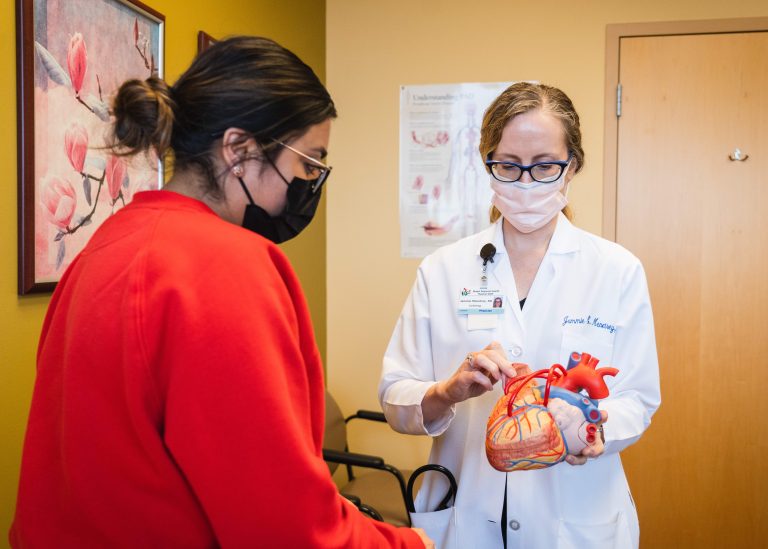Eating for a Healthier Heart is contributed by Jammie Menetrey, DO, MBA, FACC, who practices Cardiology at Skagit Regional Health. This article is published in the Spring/Summer 2023 Edition of Vibrant Senior Options Resource Guide.

A plant-based, healthy diet can “make a huge difference, not only in preventing heart disease, but also treating it and possibly even reversing it,” according to Cardiologist Jammie Menetrey, DO, MBA, FACC, who practices at Skagit Regional Health.
Whole Food Diet
Dr. Menetrey recommends a plant-based, whole food diet that includes more vegetables, fruits, whole grains and legumes, such as peas, beans and lentils. “Eating this way goes beyond just helping to improve our heart health, it has positive implications for so many other organs from our skin to our brain health, to our gut and our microbiome,” Dr. Menetrey said.
Foods to Avoid
She also encourages avoidance of processed foods, refined sugars and packaged goods that can be high in salt.
“We really should try to avoid foods that are overly processed and things that don’t look like it was just picked off the tree or pulled out of the ground. Food that’s highly refined, such as refined grains that have been milled to the point where we removed all the good fiber and the iron and the vitamins, those are the types of grains that we want to avoid,” Dr. Menetrey said. “[Foods] that come in cans [or] are packaged in bags and boxes, generally, those are preserved with salt. We really want to try to minimize that. We want to eat the foods that are provided freshly from the earth and have the least amount of processing to them.”
Benefits to Whole Food Diet
Benefits to the plant-based, whole food diet include a lower caloric intake while the nutritional value is higher. “Because the plants themselves have so much fiber in them, we fill up much more quickly when we’re eating plants, as opposed to sweets, oil, dairy and meat,” she said. “The way I like to think about it is variety. The more variety that I can see on my plate, the types of food, the more color I can see on my plate, the more nutrients I know that I’m going to be consuming.”
Shopping and Food Preparation
Dr. Menetrey offers a few tips for grocery shopping and food preparation:
- At the grocery store, focus on the fresh produce aisle for the vast majority of your purchases.
- Make a big meal or two on the weekends to have ample healthy leftovers for lunches and dinners during the week.
- Plan ahead to avoid impulse purchases of fast food or refined snacks.
Jammie Menetrey, DO, MBA, FACC practices Cardiology at Skagit Regional Health. She sees patients at Skagit Regional Clinics Mount Vernon and Anacortes.





















